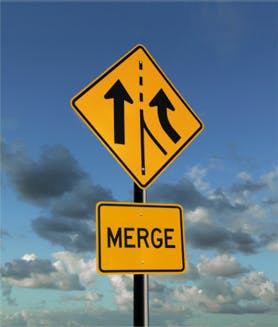“I knew enough to allow them to handle their own culture, headquarters and management,” said Paul Murry, CEO of Calvin Klein, a PVH Corp. company.
In 2003, PVH bought Calvin Klein when sales were $2.8 billion. Last year, the numbers ended with sales at $7.6 billion.
That statement alone tells why M&A must have a people component. According to a KPMG research study, 83 percent of all mergers fail. Hell, even the divorce rate in the U.S. is about 50 percent and that has nowhere near the impact both financially and personally that failure a M&A will extract if not successful.
Famous mergers that fell flat
The M&A Hall of Fame would have to be the following companies that got married and realized that it was not going to work. Oh, and by the way, they all mentioned “synergy” when announcing the deal.
Hall of Fame of failed mergers:
Interviews of over 100 senior executives, according to the KPMG report, which tracked close to 700 deals over a two year period, revealed that the overwhelming cause for failure “is the people and the cultural differences.”
God forbid that the companies involved are from two different countries or cross-cultural situations where the difficulties are amplified.
It is understood by all that financials are (and should be) at the top of the pyramid. The problem is that many of the specialists leading the M&A team are, for the most part, financial people. They are also expected to handle the implications of culture and people, which is totally not their domain of expertise. These major challenges are underestimated all too often, and in the M&A environment, end up at the bottom of that same pyramid.
Recipe for success
The level of intensity of this process is at such an extensive scale that strategically it has to have someone whose fixation is investigating and managing these complex people and change issues.
Numbers only tell a part of the story. Numbers can paint a portrait, but in order to paint a masterpiece, the formula is People + Culture + Numbers = Success.
This equation should bring all the tea leaves into focus.
It is like the saying that “culture eats strategy for lunch.” Well, no matter how great the numbers, people and culture will have the numbers for breakfast, lunch and dinner.
In a merger, Company A plus Company B minus People & Culture will produce a fissure like a crack in the windshield that over time will spread until a new one is needed.
An M&A checklist
While there are numerous checklists, the first should be a thorough analysis of organization culture and degree of “?t” with the parent company. This should be the yardstick or prism that all M & A strategy should be filtered through. There must be a balance and symmetry between the financials and the organizational and people culture.
The human and cultural issues that separate the 17 percent of successful mergers from the 83 percent that fail are not about some soft or fancy stuff, but the clear reality of productivity, shareholder value and sustained growth. People and cultural issues are important in determining a deal’s success.
Not only that but whether a company is in M&A mode or just struggling to regain their footing, all organizations must understand their culture.
Only by understanding your company’s culture can leadership create the context for true change to happen and take hold. Changing culture means changing behavior.
The quickest and most efficient way to effect and create change is to have individuals in leadership who are true representative of the culture of the company. These individuals are the culture ambassadors. These individuals demonstrate what the new culture is all about.
People and culture will be the determinants of competitive advantage going forward, whether you are in M&A mode or just simply trying to survive.
